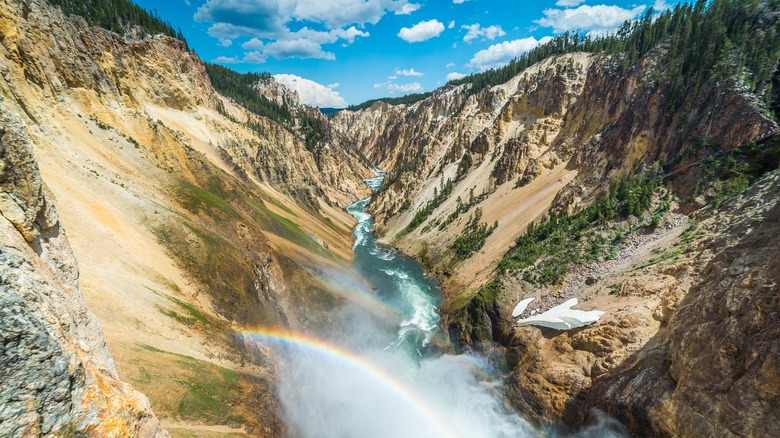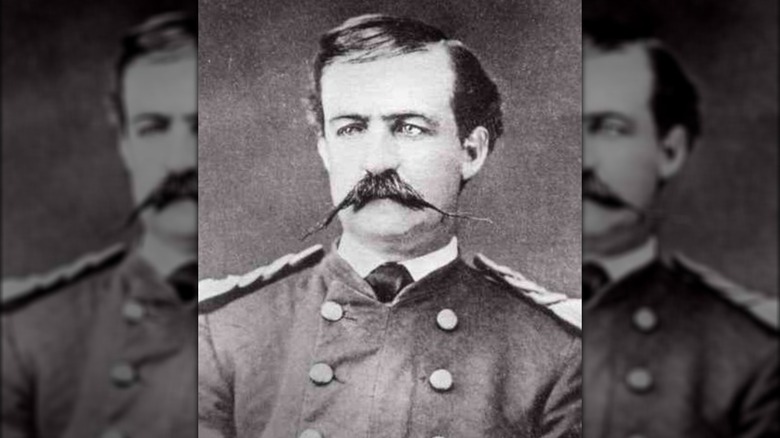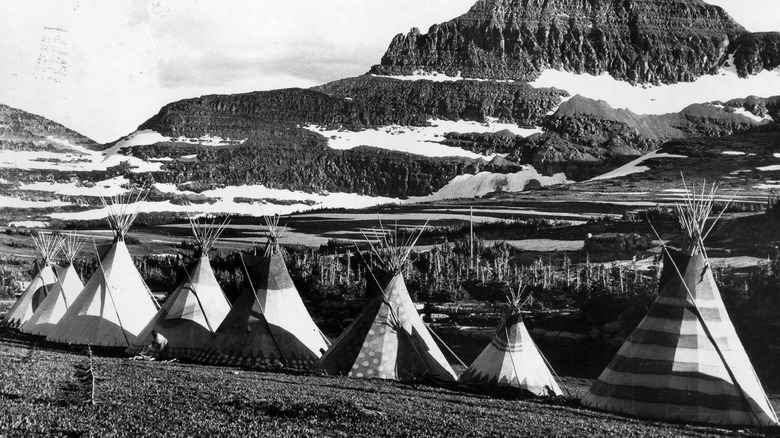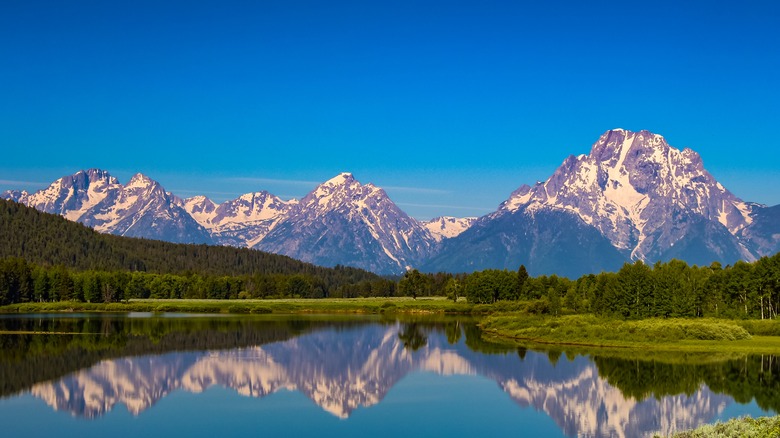The Historic Reason Behind The Renaming Of Mount Doane In Yellowstone
Yellowstone became the first-ever national park in the U.S. after Congress officially established it on March 1, 1872. Per Britannica, Yellowstone can be found in three states; Wyoming, Montana, and Idaho. The park, which is notoriously large, encompasses a whopping 3,472 square miles. Additionally, it's an incredibly popular tourist destination as the National Park Services states that in 2021 alone, Yellowstone had nearly 5 million visitors. However, the park's history goes back beyond its 150 years. Another article from NPR reports that before it became a national park, Yellowstone was home to various Native American tribes that were eventually forced to leave.
These include the Kiowa, Blackfeet, Cayuse, Coeur d'Alene, Shoshone, and Nez Perce. Even so, Smithsonian Magazine explains that its Native American history has been erased. As Shane Doyle, a research associate at Montana State University put it, "The park is a slap in the face to Native people." He added that "There is almost no mention of the dispossession and violence that happened."
On June 9, the National Park Service announced that Yellowstone's Mount Doane was now named First Peoples Mountain to honor Native Americans. Located east of Yellowstone Lake, the mountain was originally named after Gustavus Doane, a man who was involved with the murder of nearly 200 members of the Piegan Blackfeet tribe (via CNN).
Who was Gustavus Doane?
Born in Illinois in 1840, the Orbis Cascade Alliance writes that Doane was born in Illinois but raised in California. Upon graduating from the University of the Pacific, he joined a volunteer unit and eventually became a sergeant. Doane continued to climb up the military ranks and by 1884, he had been promoted to captain. That being said, the National Park Service states that his claim to fame was his role in the Washburn-Langford-Doane expedition. In 1870, Henry D. Washburn, Nathaniel P. Langford, and Cornelius Hedges ventured into Yellowstone to traverse its wilderness, which at the time had not been explored by non-Native Americans. Doane was added to the group to provide his military expertise.
His role, as explained by another article by the National Park Service, was "to escort the surveyor-general of Montana to the falls and lakes of the Yellowstone and return." Ultimately, the group made their way into Tower Fall, Yellowstone Lake, and more. In addition, they discovered and named the iconic Old Faithful Geyser. Needless to say, Doane played an important part in this expedition. So much so that a mountain in eastern Yellowstone National park that has appeared on maps since 1885 was named after him (via WyoFile) a few years before he died in 1892. However, prior to the expedition, Doane was known to have been a part of the senseless Marias Massacre.
The Marias Massacre
The Great Falls Tribune writes that the Marias Massacre, also called the Baker Massacre, was a culmination of several events that led to the murder of Malcolm Clarke, a white fur trader from Montana. The publication explains that Clarke raped a Blackfeet woman that was married to Pete Owl Child, a Blackfeet warrior. Ultimately, this led Owl Child to murder Clarke in revenge. However, History states that Owl Child stole horses from Clarke. Owl Child was caught and beaten. He then killed Clarke as an act of retribution. Whatever the case, Clarke's murder outraged locals and they demanded vengeance.
Under Major Eugene Baker's command, a group of soldiers searched for Owl Child and his camp. According to History, the group encountered a different Blackfeet camp on January 23, 1870. When Baker was told that Owl Child was not in the camp, he stated "That makes no difference" and gave the command that the people there be slaughtered. As the Great Falls Tribune explains, the victims were mostly comprised of women and children that were sick with smallpox and sleeping.
Ultimately, CNN reports that at least 173 Blackfeet tribal members lost their lives as a result of the Marias Massacre. The National Park Service notes that Doane led the attack and he later relished and boasted about it. Decades after the attack, Blackfeet members urged the government to make amends and change the name of Yellowstone's Mount Doane.
Fellow Native Americans have praised the mountain's new name
After a 15-0 vote, the National Park Service writes that the U.S. Board on Geographic Names agreed to change the mountain's name from Mount Doane to First Peoples Mountain. The agency added that they had consulted with 27 different Native American tribes and all were in favor of the name change. Moreover, CNN reports that the new name was also supported by the Rocky Mountain Tribal Council and the Wyoming Board of Geographic names. Tom Rodgers, a Blackfeet member, explained how important this name change was not only for current members but also for his ancestors who were victims of a horrific moment in history.
He told CNN, "We heard their cry for justice. We sought justice. We sought an accounting. We sought a reckoning with history. It has taken far far too long for this journey of healing to arrive." According to NPR, this name change is to honor both Yellowstone's long-standing native history and to celebrate its 150th anniversary. Now, Yellowstone has expressed that they will consider changing other ill-suited geographical names in the future. With this, William Snell from the Rocky Mountain Tribal Leaders Council states that "It is a victory, yes. Is history being rewritten and retold truthfully? I hope so" (via NPR).



